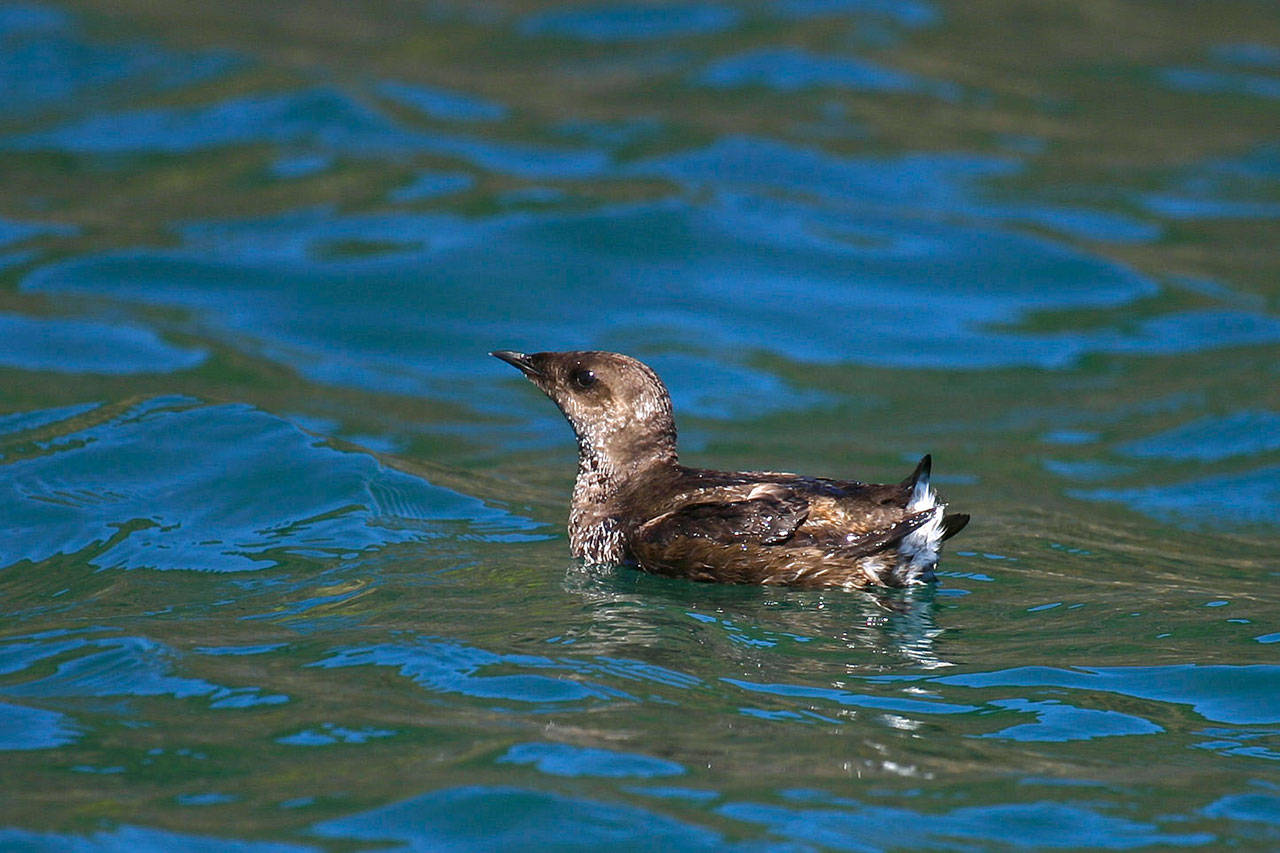PORT ANGELES — The final environmental impact statement for the long-term conservation of the marbled murrelet on state timber lands has been released as the state nears the end of more than 20 years of gridlock on how best to protect the threatened bird.
The 1,590-page document was released Friday and the state’s preferred alternative will protect 168,000 acres of current murrelet habitat while decreasing the number of operable acres on Clallam County’s West End. The Board of Natural Resources, which meets Oct. 1, will now need to formally select a final conservation strategy.
“For more than 20 years we have been stuck working through a long and complicated process,” said Commissioner of Public Lands Hilary Franz in an interview last week. “As part of that, we have set aside more than 175,000 acres of forest land that has not been able to be harvested and provide revenue for counties and schools, help support jobs and even provide habitat for the marbled murrelet.”
She said those 175,000 acres had been set aside for more than 20 years waiting for a decision to be made, but now more than 100,000 acres will be released for harvest across the state.
“That is land that has not been available to the counties and to the schools for revenues, it has not been available to the communities for jobs and economic opportunity,” Franz said.
The EIS shows new analysis on the impacts to junior taxing districts. While the final EIS does not provide a district-by-district financial analysis it does show the change in harvestable acres. For many junior taxing districts there is an increase in harvestable acres.
“Commenters asked for more detailed financial analysis of how the alternatives would impact timber counties, including the reduction in revenue because of an emphasis on thinning,” The EIS said. “Some commenters noted that rural communities have seen loss of sawmills and tax revenues and one noted that little revenue comes from thinning.”
The EIS shows that Clallam County, which currently has 46,000 operable acres, will see an overall increase of 1 percent of operable lands under the preferred alternative.
However, it also shows that West End junior taxing districts, which rely heavily on revenues from timber sales, will face drops in their operable acres if the preferred alternative is adopted.
Clallam Fire District No. 5 would lose 14.1 percent of its operable acres, Cape Flattery School District would lose 13.9 percent of its operable acres, Clallam Fire District No. 4 would lose 6.4 percent of its operable acres, Crescent School District would lose 5.3 percent of its operable acres and the Forks Community Hospital district would lose 2.9 percent of its operable acres.
Among the junior taxing districts seeing an increase in operable acres are the Sequim School District, Sequim Parks and Recreation District, Clallam Fire District No. 3 and the Port Angeles School District.
Throughout the process Clallam County commissioners have expressed concern that the state had not provided adequate analysis on the financial impact junior taxing districts would face.
Clallam County joined other timber counties in funding a yet-to-be-completed financial analysis that will be overseen by the Washington State Association of Counties. The Department of Natural Resources also supplied funding for that study.
“When we developed this habitat conservation plan amendment and the [Board of Natural Resources] made the decision to send it to [U.S. Fish and Wildlife Service], it recognized the impacts that communities like Pacific, Wahkiakum, Clallam and Jefferson County have experienced over the last 20 plus years,” Franz said. “The board made a very specific conscious decision to minimize impacts to those communities while also doing its best to meet its Endangered Species Act [requirements] and protect the marbled murrelet.”
The marbled murrelet is a small, fast-flying seabird that only comes on land to lay eggs and rear its young, spending the rest of its life at sea. Murrelets lay one egg per year, only setting them atop large moss-covered branches high in the forest canopy within 55 miles of saltwater.
DNR manages 14 percent of existing marbled murrelet habitat in Washington state. The U.S. Fish and Wildlife Service considers DNR-managed land in Clallam, Pacific and Wahkiakum counties to be important habitat to the conservation of the species, of which approximately 6,000 are believed to remain in Washington state.
The bird is listed as “threatened” and less than 2 percent of its population is in Washington, with 94 percent of its population living in Alaska or British Columbia, according to DNR.
“Alternative H, selected by the board to move forward, supports our schools, rural communities and our role in the long-term health of the marbled murrelet,” Franz said. “Neither side thinks this plan is perfect … but we believe that is a sign we’ve reach a good healthy compromise here that meets our legal obligation as well as our moral obligation to the long-term health of these communities, their economies and to the survival of the bird.”
________
Reporter Jesse Major can be reached at 360-452-2345, ext. 56250, or at jmajor@peninsuladailynews.com.

